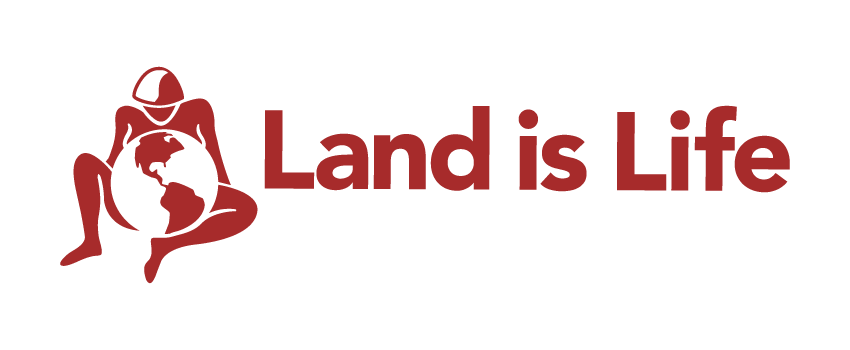LAND IS LIFE HOLDS INDIGENOUS WOMEN’S TRAINING SESSION IN PANAMA: launches new cohort of Women’s Program Fellowship
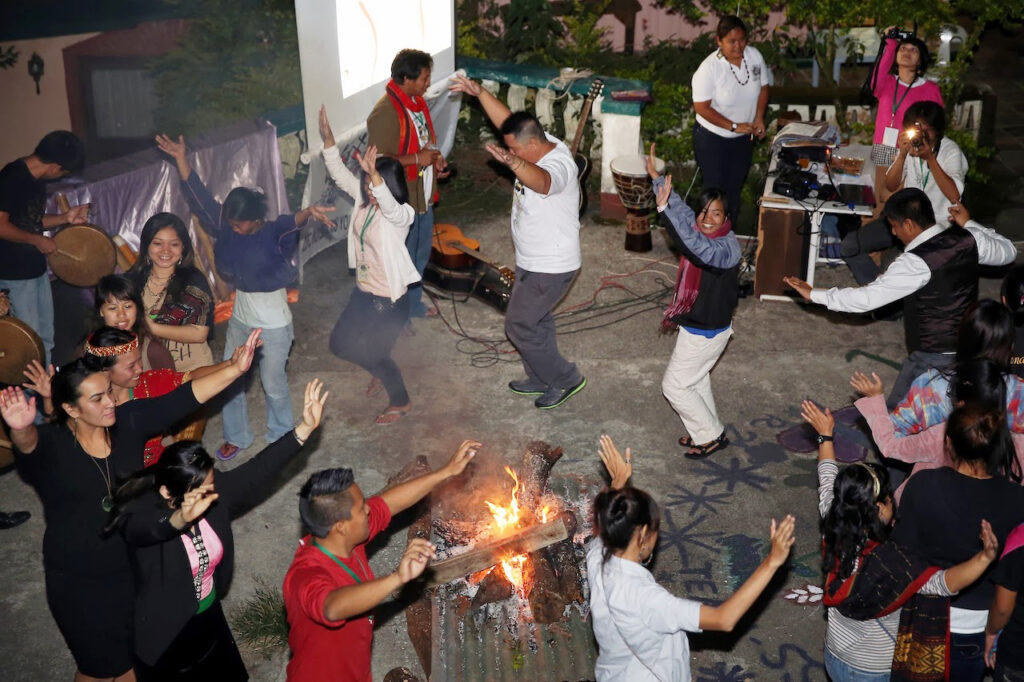
From the 8th to the 12th of March, Land is Life held a training session for Indigenous women as part of its ongoing Indigenous Women’s Program. The event, organized in Panamá, also served as the launch point for the new cohort (2024 – 2025) of the Women’s Program fellowship. The meeting was a space for learning, sharing of experiences and knowledge, and building solidarity amongst Indigenous women. The session was attended by Fellows from Land is Life, as well as by Indigenous women from The Indigenous Women’s Network on Biodiversity. In all, five countries were represented – Mexico, Ecuador, Kenya, Colombia and, of course, Panama, where representatives of the Guna and Emberá Peoples were present. The event was held in the Dad Naggue Dubbir community, in the Indigenous Comarca of Guna Yala, on the country’s Pacific Coast. In 2025 the community will celebrate the 100th anniversary of the Guna revolution, and the return to the Guna People of control over their traditional territory. Workshop participants engaged in discussions about the empowerment of women and youth in decision-making processes, and the importance of developing community protocols on Free, Prior and Informed Consent. They built their capacity to engage in negotiations of the Climate Change and Biodiversity Conventions, sharing their communities’ perspectives and experiences. Participants also learned about the unique governance structure of the Guna People, their history, and their culture, including a visit to the Mola Dibanan Galu Women’s Cooperative project. The fellows present left the event inspired to start their local projects, which have one common goal: to strengthen the rights of Indigenous women.
INDIGENOUS TERRITORY AND ISOLATED COMMUNITIES UNDER THREAT IN PARAGUAY
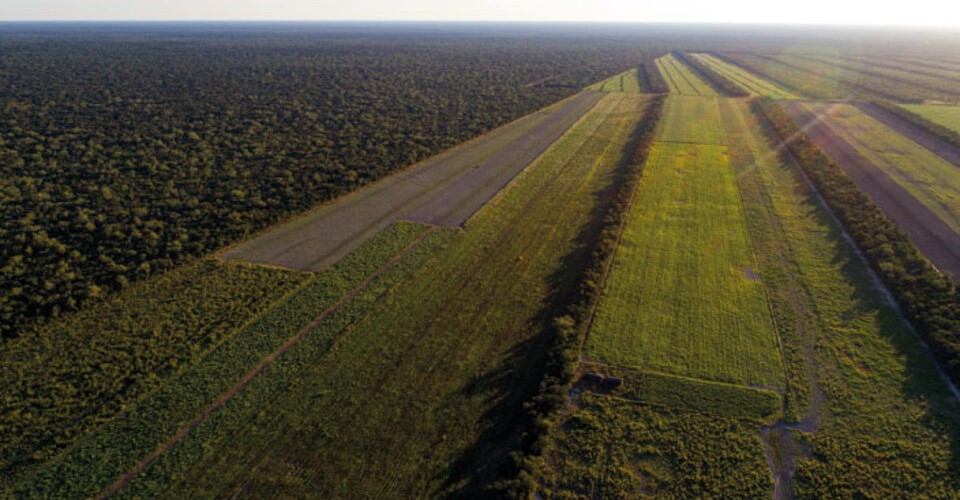
‘Voluntary trust’ legislation discussed in Senate. While the Ayoreo Indigenous People have title to half their traditional territory, draft legislation introduced by a group of government senators would establish a Fideicomiso Voluntario or ‘voluntary trust’ for the rest of their traditional territory. The Ayoreo-Totobiegosode were never consulted about the Trust, as is their right, and have denounced it as a threat to the existence of isolated communities, stating that it could lead to the privatization of land where they are located. In February 2016, the Inter-American Commission on Human Rights (IACHR) issued precautionary measures that required the government of Paraguay to put an end to the deforestation of the ancestral territory of the Ayoreo-Totobiegosode, located in the country’s Gran Chaco area. The measures also demanded that Indigenous Peoples in Isolation and Initial Contact be protected from unwanted contacts. However, the IACHR measures did not have the hoped for effects; the Gran Chaco forests where the Ayoreo-Totobiegosode live, continue to suffer major levels of deforestation that show little signs of coming to an end. And at present Paraguay is the South American country with the second highest level of deforestation in the last two decades, surpassed only by Brazil, and its Chaco dry forest is disappearing faster than any other on the planet. As a result, in 2022 Indigenous organizations demanded action, warning that Ayoreo Totobiegosode communities, the only communities still in voluntary isolation outside the Amazon, were at serious risk of disappearing. The Indigenous organizations also stated that “the absolute and deliberate absence of action by the Paraguayan State” to protect and return to this community the collective ownership of their territory, which they consider “theirs by right and on which they depend to survive.” For the Ayoreo, not only has the Paraguayan state shown a total lack of interest in returning their remaining lands, the Senate is now considering a measure that could make that even more unlikely. Land is Life urges the Paraguayan Senate not to proceed with the dangerous and oddly named ‘Fideicomiso Voluntario’; to act to restore traditional territories to which the Ayoreo People have a right; and to protect the remaining Ayoreo Totobiegosode living in Isolation and Initial Contact from further encroachments and deforestation, as required by the Inter American Commission on Human Rights. Not to do so would imply complicity in a genocide. Background The Ayoreo first came into contact with outsiders in the 1940s and 1950s, when Mennonites settlers established colonies on their land, leading to clashes and deaths on both sides. Arriving in the late 1970’s, American missionaries also showed little concern for the lives of the Ayoreo; the US based New Tribes Mission helped organize ‘manhunts’ whose purpose was to forcibly evict numerous Ayoreo Totobiegosode from the forest. Constant land invasions forced other Ayoreo groups to leave the forest in 1998 and 2004. In recent years, agribusiness has replaced religion as the major threat to the Ayoreo-Totobiegosode, although the Mormons are a major force in Paraguayan agribusiness. A large part of the Ayoreo land, which is also home to groups living in Isolation and Initial Contact, is ‘owned’ by five companies responsible for much of the deforestation affecting the Indigenous People’s ability to survive. If their plans come to pass, most of the land will be stripped for cattle raising. Paraguay’s 1992 constitution guarantees the right of indigenous communities to hold land communally, but that right is mainly words on paper. And in 2005 a twelve year court case to preserve Ayoreo traditional land came to an end when the country’s Congress voted against the expropriation of 114,000 hectares from Brazilian and Argentine landowners. Paraguay, a country of a little more than 400 km2, has been the second most deforested country in South America in the last two decades, only surpassed by Brazil, a country many times its size*. As a result, Chaco’s dry forest has been disappearing at a faster rate than any other forest on the planet. (Global Forest Watch, 2021) In 1993 the Ayoreo-Totobiegosode submitted a formal land claim to their forest, and in 2013 they requested the Inter-American Commission on Human Rights (IACHR) to intervene. Two years later, the Commission issued urgent protection measures for the Ayoreo territory while its land claim was being considered. As a consequence, the Paraguayan and the Indigenous People entered formal negotiations in 2016, with the objective of transferring titles to their lands. The Commission acted as mediator. However, the Ayoreo pulled out of the discussions in 2021, stating they were little more than a delaying tactic that would permit the deforestation to continue; they subsequently requested the Commission to rule on their land rights case. Photo: Andrés Unterladstaette IWGIA. The forest and agrobusiness. Soybean and corn planting increase along deforestation, to the detriment of biodiversity in the Chaco region. Further Information: https://www.iwgia.org/en/news/4435-the-ayoreo-the-last-isolated-people-outside-the-amazon.htm l https://english.elpais.com/international/2024-01-13/between-the-forest-and-death-in-paraguay.html https://www.survivalinternational.org/tribes/ayoreo Since its founding in 1992, Land is Life has played an important role in the struggles of Indigenous peoples around the world, working in partnership with them to advance their rights locally, nationally and internationally. Please donate (see below) and help us continue supporting Indigenous Peoples such as the Ayoreo-Totobiegosode, and many others.
TIERRAS AYOREO-TOTOBIEGOSODES Y COMUNIDADES AISLADAS AMENAZADAS POR PROPUESTA DE LEY EN PARAGUAY

En febrero de 2016, la Comisión Interamericana de Derechos Humanos (CIDH) emitió medidas cautelares que exigían al gobierno de Paraguay poner fin a la deforestación del territorio ancestral de los Ayoreo-Totobiegosode, ubicado en la zona del Gran Chaco del país. Las medidas también exigían que los Pueblos Indígenas aislados fueran protegidos de contactos no deseados. Sin embargo, los requerimientos de la CIDH no parecen haber surtido mucho efecto. Los bosques donde viven estos Pueblos Indígenas han sido sometidos a una deforestación extrema que da pocas señales de llegar a su fin. En consecuencia, las comunidades Ayoreo Totobiegosode en Aislamiento Voluntario y Contacto Inicial se encuentran en grave riesgo de desaparición. Los Ayoreo sí cuentan con título de la mitad de su territorio tradicional, pero un proyecto de ley presentado por un grupo de senadores oficialistas establecería un “fideicomiso voluntario” para el resto de sus tierras. Sin embargo, los Ayoreo-totobiegosode nunca fueron consultados sobre la legislación, como es su derecho, y han denunciado que representa una amenaza a la existencia de comunidades aisladas, ya que en la práctica el ‘fideicomiso voluntario’ podría llevar a la privatización de las tierras donde estas se ubican. Para los Ayoreo no sólo había una total falta de acción por parte del Estado paraguayo para devolverles las tierras restantes, sino que ahora está considerando una medida que podría privatizar esas tierras y ponerlos en mayor riesgo de desaparición.La legislación se debatirá el lunes 4 de marzo cuando el Senado reanude sus sesiones.
EL GTI-PIACI* RENUEVA LA LUCHA PARA PROTEGER A LOS PUEBLOS INDÍGENAS EN AISLAMIENTO VOLUNTARIO Y CONTACTO INICIAL
Land is Life entrega la Secretaría Técnica después de 4 años consecutivos de intenso trabajo. Los Pueblos Indígenas viviendo en aislamiento voluntario y contacto inicial en las regiones amazónicas y del Gran Chaco de América del Sur están amenazados como nunca antes. La falta de reconocimiento en los marcos legales en los Estados, la minería, la tala ilegal de árboles, la presencia de menonitas, los misioneros, la soya y la ganadería, y ahora el narcotráfico y la violencia están haciendo incursiones cada vez mayores y más graves en los territorios de estos Pueblos. A modo de ejemplo, en el peor de los casos la infame legislación ‘Marco Temporal’ podría afectar al 95% de los Territorios Indígenas de Brazil. De ahí la importancia de la reunión anual de la organización regional GTI-PIACI, un grupo de trabajo de 20 organizaciones regionales dedicadas a avanzar los derechos de estos Pueblos Indígenas a vivir en estado natural. Desde su creación en 2019, Land is Life “ha ejercido la Secretaría Técnica aportando de forma sustancial para posicionar y promover la agenda de nuestro grupo en espacios nacionales, regionales e internacionales con compromiso, transparencia y sobre todo solidaridad con todas las organizaciones que hacemos parte de esta iniciativa.” Land is Life promovió un trabajo arduo de incidencia para avanzar en los derechos de los PIACI, como lo hizo en las Naciones Unidas, con importantes aliados como el Foro Permanente sobre Cuestiones Indígenas, el Relator sobre los derechos de los Pueblos Indígenas, el Mecanismo de Expertos sobre los derechos de los Pueblos Indígenas y la Oficina del Alto Comisionado de las Naciones Unidas para los Derechos Humanos. La reunión anual del GTI-PIACI se lleva a cabo esta semana en la sede de la Organización de Pueblos Indígenas de Colombia, OPIAC, como parte del trabajo incesante en coordinar y fortalecer esfuerzos para proteger a los Pueblos Indígenas en Aislamiento Voluntario y Contacto Inicial en toda la región. Land is Life agradece la confianza puesta en ella por las organizaciones que conforman el GTI-PIACI, y seguirá luchando, como siempre, por los derechos de los Pueblos en Aislamiento Voluntario y Contacto Inicial. En 2024, Land is Life pasa la batuta a Amazon Conservation Team, quien asumirá la Secretaria Técnica del GTI-PIACI. * El Grupo de Trabajo Internacional sobre los Pueblos Indígenas en Aislamiento y Contacto Inicial
BANGLADESH Y SUS PUEBLOS INDÍGENAS
Puede que Bangladesh sea una estrella en ascenso, pero la voz de sus pueblos indígenas ha caído en oídos sordos. Bangladesh es una estrella en ascenso en el escenario internacional. Las recientes visitas del presidente francés, Emmanuel Macrón y Sergei Lavrov, el ministro de Asuntos Exteriores ruso, son testimonio de la creciente importancia del país. India, que rodea a Bangladesh, salvo una pequeña zona al sur donde el país limita con Myanmar, también mantiene un gran interés en el país desde que luchó a principios de los años 1970 por su independencia de Pakistán. Para completar el panorama, el presidente chino Xi Jinping, también pasó por Bangladesh, sin duda interesado en la suerte de las importantes inversiones hechas por China como parte de su ahora aparentemente estancada iniciativa de la Franja y Ruta; China es el principal prestamista del país, lo que sin duda hace que India esté pendiente de sus intenciones. Para Bangladesh y su gobernante Liga Awami, por otro lado, el sol brilla como nunca. Sin entrar en detalle, parece justo decir que todo va bien para una nación que alguna vez fue considerada un “caso perdido”, y ahora es conocido como un milagro económico. Internamente, por otra parte, quedan importantes cuestiones por resolver. Uno es el destino de los Chittagong Hill Tracts, CHT, una zona en el centro del país tradicionalmente poblada por minorías indígenas. Muchos de estos pueblos, conocidos colectivamente como Jummas, todavía administran sus territorios de forma colectiva, pero en la actualidad sus tradiciones y culturas se encuentran amenazadas por el extractivismo y una industria de turismo en la que el ejército del país mantiene un fuerte interés. En el pasado la Liga Awami estuvo preocupada por el CHT y el destino de los pueblos indígenas, firmando el Acuerdo Chittagong Hill Tracts después de 20 años de conflicto armado. El documento habría dado a los Pueblos Indígenas una gran medida de control sobre sus territorios y sistemas de gobierno, y fue ampliamente celebrado también por haber puesto fin a los combates. Eran tiempos optimistas en el CHT. Sin embargo, unos veintisiete años después, el acuerdo no se ha implementado. En algún momento, la Liga Awami cambió de opinión. No está claro a qué se debe el cambio de opinión, pero cualesquiera que hayan sido los motivos, el destino de la CHT y sus Pueblos Indígenas sigue siendo frágil. Lo que está claro es que a medida que disminuye la posibilidad de que se implemente el Acuerdo, su inseguridad aumenta. Para ilustrar el problema, en un área que en el pasado fue casi enteramente poblada por pueblos indígenas, los bengalíes, que constituyen el 98% de la etnia principal del país, ahora forman aproximadamente la mitad de los habitantes. Y, efectivamente, los militares del país han sido acusados durante mucho tiempo de diseñar cambios demográficos. Y durante las décadas de 1970 y 1980 hizo precisamente eso: instituyeron medidas que cambiarían la composición demográfica del CHT. Según el Grupo de Trabajo Internacional para Asuntos Indígenas (IWGIA), más de 400.000 bengalíes sin tierras fueron asentados en la zona, mientras que miles de indígenas se vieron obligados a abandonar sus hogares. Quizás fueron los afortunados; miles más fueron asesinados por los propios militares. Los abusos contra los derechos humanos continuaron hasta finales de los años ochenta y principios de los noventa y, como resultado, 70.000 jummas, aproximadamente el 10% de la población jumma total, se vieron obligados a huir y buscar refugio en el estado indio de Tripura. La regulación de del país, instituida durante el período colonial británico, es ahora la única legislación que brinda protección a los pueblos indígenas de la zona. Pero ese Reglamento también está bajo ataque: impugnada ante los tribunales, según algunas fuentes a instancias de las fuerzas armadas. Y si logran invalidar la legislación, el camino quedará despejado para que personas ajenas compren legalmente tierras en Hill Tracts, las formas tradicionales de gestión de la tierra inevitablemente desaparecerán, y la batalla estará a punto de terminar. ¿A quién le interesa los Chittagong Hill Tracts? A pocos parece. Puede que Bangladesh haya logrado enormes avances económicos desde su fundación en 1972, y ahora sea cortejado por las grandes potencias, pero el destino de los Pueblos Indígenas del país y de los propios Hill Tracts, no está en la lista de prioridades de nadie. Esto queda claro en el caso de la Liga Awami y la Primera Ministra Sheik Hassina, que en enero regresó al poder por cuarto período consecutivo de cinco años. La victoria se anticipó, en parte porque el Partido Nacional de Bangladesh (BNP) boicoteó la votación, y en parte porque, incluso si no lo hubiera hecho, la victoria de la Liga Awami, sospechosa durante mucho tiempo de manipulación electoral, simplemente era “esperada”. De ahí el boicot y el encarcelamiento de miles de miembros del partido de oposición. El Gobierno, que se encargó de supervisar la votación, llegó incluso a condenar al Premio Nobel de la Paz Muhammad Yunus por violar leyes laborales. Yunus es el fundador del Banco Grameen, y uno de los principales defensores del microcrédito, un factor que para muchos fue clave en estimular la recuperación económica de Bangladesh. Como gobierno de facto del país, es probable que los militares tampoco cambien su postura. Un breve análisis sugiere que sus intereses no son atendidos por un área con un potencial turístico importante, pero que no está cien por ciento bajo su control. Binota Doy Dhamai, ex Presidente-Relator del Mecanismo de Expertos de la ONU sobre los Derechos de los Pueblos Indígenas, bromea diciendo que lo que existe hoy en el CHT es un “Complejo Turístico Militar”. Y, vale añadir, la zona también sirve como campo de entrenamiento para el ejército. La experiencia adquirida allí puede servir cuando los soldados bangladesíes participen en las fuerzas de mantenimiento de la paz de la ONU; el país es el segundo mayor contribuyente de personal militar a estas iniciativas. Como beneficio adicional, las misiones aportan dinero, tanto para el país como para los
BANGLADESH AND ITS INDIGENOUS PEOPLES
Bangladesh may be a rising star, but the voice of its Indigenous Peoples has fallen on deaf ears. Bangladesh is a rising star on the international stage. Recent visits by French President Macron and Russian Foreign Minister Sergei Lavrov, give testimony to the country’s growing importance. Neighboring India also maintains a keen interest in its neighbor, having taken Bangladesh’s side in its fight for independence from Pakistan in the early 1970’. Chinese President Xi Jinping, also stopped by; no doubt concerned about the fate of the major investments made in Bangladesh as part of its now seemingly stalled Belt and Road Initiative. China is also the country’s major lender, doubtless making India uneasy. For Bangladesh and its ruling Awamy League, however, the sun is shining. Without getting into too much detail, it seems fair to say things are going well for this Asian nation once judged a ‘basket case’, but now considered something of an economic miracle. Internally, however, there are major issues to be resolved. One is the fate of the Chittagong Hill Tracts, (CHT), an area in the center of the country traditionally populated by Indigenous minorities. Many of these Peoples, collectively known as Jummas, still manage their lands collectively, but now find these traditional systems threatened by extractive projects and a tourism industry in which the military has major interests. At one point, the Awami League appeared concerned about the CHT and the fate of its peoples, signing the Chittagong Hills Accord after 20 years of armed conflict. The document would have given Indigenous Peoples a large amount of control over their territories and systems of government, and was also widely celebrated for putting an end to the fighting. These were optimistic times in the CHT. However, some twenty-seven years later, the accord has not been implemented; somewhere along the line, the Awami League changed its mind. What led to the change of heart is not clear, but whatever the motives might have been, the fate of the CHT and its Indigenous Peoples remains fragile. What is clear, is that as the possibility the Accord will be implemented diminishes, their insecurity increases.To illustrate the problem, in an area once almost entirely populated by Indigenous Peoples, Bengalis, who form 98% of the country’s principal ethnicity now form almost half the inhabitants. The military has long been accused of engineering population change. And during the 1970s and 1980s it did just that, instituting measures that would change the demographic makeup of the CHT. According to the International Working Group for Indigenous Affairs (IWGIA), more than 400,000 landless Bengalis were settled in the area, while thousands of Indigenous People were forced to leave their homes. They were perhaps the lucky ones; thousands more were killed by the military itself. The human rights abuses continued into the late eighties and early nineties, and as a result, 70,000 Jummas, about 10% of the total Jumma population, were forced to flee and seek shelter in the Indian state of Tripura. The country’s 1900 regulation, instituted in 1900 during the British colonial period, is now the only legislation that affords protection to the area’s Indigenous Peoples. But that Regulation is also under attack; it is now being challenged in the courts, according to some sources at the behest of the armed forces. If the legislation is invalidated, traditional forms of land management will inevitably disappear, the way will be clear for outsiders to legally buy land in the Hill Tracts, and the battle will be almost over. Who is interested in the Chittagong Hill Tracts? Few it seems. Bangladesh may have made huge economic strides since its founding in 1972, and is now courted by the great powers, but the fate of the country’s Indigenous Peoples, and the Hill Tracts themselves, is on no one’s list of priorities. This is certainly true of Prime Minister Sheik Hassina, and her Awami League, recently returned to power for a fourth consecutive five year period. The victory was anticipated, in part because the Bangladesh National Party (BNP) boycotted the vote, and in part because even if it hadn’t, the victory of the Awami League, long suspected of electoral manipulation, was simply ‘expected’. Hence the boycott, and the jailing of thousands of opposition party members.The Government, which charged itself with the supervision of the vote, even went as far as to convict Nobel Peace Prize winner Muhammad Yunus, of violating labor laws. Yunus is the founder of the Grameen Bank, and one of the major advocates of microcredit, a factor many credit with stimulating Bangladesh’s economic turnaround. As the country’s de facto government, the military is also unlikely to change its stance. A brief analysis suggests their interests are not served by an area that has important tourism potential, but is not entirely under their control. Binota Doy Dhamai, former Chair-Rapporteur of the UN Expert Mechanism on the Rights of Indigenous Peoples, quipped that what exists in the CHT today is a ‘Military Touristic Complex’. The area is also serves as a training ground for the army. Experience gained there can be helpful when Bangladeshi soldiers take part in UN Peacekeeping forces; the country is the second largest contributor of military personnel to these initiatives. As a bonus, the missions bring in money, for both the country and the soldiers themselves. So apart from the Indigenous Peoples and those with an interest in their lands, in Bangladesh no one is much interested in the fate of the area, and if they are, they generally keep quiet about it for fear of reprisals. Many critics have already left for India and other more amenable countries. Externally, there may be concern, mainly at the office of the UN Special Rapporteur on the Rights of Indigenous Peoples, and amongst International NGOs, but these have little power in Bangladesh despite the major contribution they made to the country’s dramatic recovery. For their part, diplomatic missions mentioned above are unlikely to be so indiscreet as to mention what is deemed a
AN IMPORTANT VICTORY FOR THE MAASAI: High Court of Tanzania rules Pololeti Game Reserve illegal
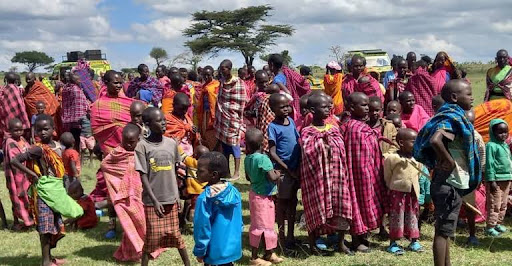
October 02 2023 In 2022, the Tanzanian Minister of Natural Resources and Tourism announced the demarcation of 1,500 hectares of Maasai land for the Pololeti Game Management Reserve. The announcement led to major protests in the Loliondo/Ngorongoro area of northern Tanzania, and on June 10th 2022, the Tanzanian police used force to evict the Maasai from their land. The result was dozens of people injured and thousands seeking shelter in the nearby forest. Arbitrary arrests of community leaders were also reported, including Village Councillors and Chairpeople, in clear violation of the Maasai’s human and collective rights. The protests arose due to the government’s plans to lease the legally registered village lands to the Otterlo Business Corporation, (a Dubai company linked to that country’s royal family), for tourism and hunting. One year later, however, after a judicial review that challenged the Minister’s decision as based on illegalities, the absence of consultation, and carried out with violence, the country’s High Court decided in favor of the plaintiffs, ruling the Game Management Reserve illegal. The Court stated that in view of the lack of consultation, the entire process for the establishment of the Pololeti area was null and void. On the other hand, the court stopped short of assigning blame for the ensuing violence. Whether this is the end of the affair, is another matter: harassment of the pastoralist Maasai, whose grazing land is essential to their survival, is ongoing. In 1992, the Tanzanian government authorized the OBC to take over four hundred thousand hectares of land for game hunting and a private airport, land that was home to over fifty thousand Maasai. In 2009, the government forcibly displaced over three thousand Maasai at gunpoint. From 2015 to 2017, Serengeti Rangers set fire to over two-hundred eighty homes), leaving over twenty thousand Maasai homeless. The High Court’s decision represents a highly positive act for the Maasai People , and will hopefully be accepted by the Tanzanian authorities without reprisals. The sustained pressure exerted by international and Civil Society organizations has no doubt had an effect, and will need to be continued if the Maasai are to stand a chance of surviving the assault on their communities and their lands. Fotos: Land is Life Land is Life applauds the High Court’s decision, and calls on the Tanzanian government of Samia Suluhu Hassan to accept the ruling, and to respect the rights and needs of the pastoralist Maasai People. Indigenous Peoples are the best protectors of the land on which they depend, and although tourism may be an important contributor to Tanzania’s economy, it cannot be promoted at the cost of the lives and welfare of Indigenous People who are also the country’s own citizens.
LE PEUPLE BATWA SOUS ATTAQUE: pour avoir tenté de retourner sur ses terres traditionnelles à l’Est du Congo (RDC)
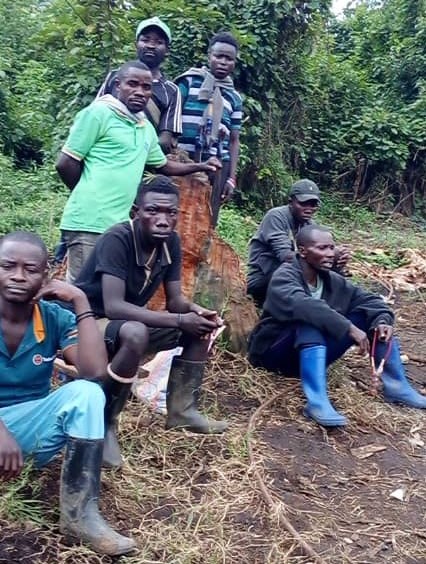
Déplacés de leurs terres dans l’est de la République Démocratique du Congo (RDC) au XXe siècle, sans consultation ni compensation, les Batwa (anciennement connus sous le nom de Pygmées) se battent pour regagner leur foyer forestier du Parc National de Kahuzi-Biega (PNKB). Mais les autorités du Parc les attaquent une nouvelle fois. En janvier 2024, les gardes de l’Autorité du Parc, accompagnés de militaires congolais, ont attaqué plusieurs communautés Batwa, déplaçant des centaines de personnes et incendiant leurs maisons. Les violences actuelles ont conduit la Commission africaine des droits de l’homme et des peuples à adresser une lettre au gouvernement du pays, dirigé par le président récemment réélu Félix Tshisekedi, appelant à la fin des violences et à l’expulsion des peuples autochtones du Parc. Les autorités du Parc accusent les Batwa d’être membres du M23, un groupe armé tutsi en conflit avec le gouvernement de la République démocratique du Congo, principalement dans la province du Kivu, au nord du pays. Les Batwa rejettent fermement cette accusation et ont déclaré leur intention de poursuivre la lutte pour retourner sur leurs terres par tous les moyens non violents possibles. Land is Life soutient pleinement la position de la Commission Africaine, et fait écho à son appel à mettre fin à la violence contre les Batwa, qui ont été brutalement déplacés de leurs territoires ancestraux, dans autre exemple de ce qui a été appelé « Conservation de la Force ». Les Batwa sont les premiers habitants de ce qui est aujourd’hui le Parc National de Kahuzi-Biega, et, à ce titre, leur droit de vivre en paix sur leurs territoires d’origine doit être respecté. La conservation ne peut jamais être une raison pour violer les droits humains des peuples autochtones. Voir ci-dessous la lettre de la communauté Batwa
EL PUEBLO BATWA BAJO ATAQUE: por intentar regresar a sus tierras tradicionales en el este del Congo (RDC)

Desplazado de sus tierras en la zona oriental de la República Democrática del Congo (RDC) en el siglo XX, sin consulta ni compensación, el pueblo Batwa (anteriormente conocido como Pigmeos) está luchando para regresar a su hogar forestal en Parque Nacional Kahuzi-Biega (PNKB). Pero las autoridades del Parque los están atacando una vez más. En enero de 2024, los guardias de la Autoridad del Parque, acompañados por militares congoleños, atacaron a varias comunidades Batwa, desplazaron a centenares personas e incendiaron sus hogares. La violencia actual ha llevado a la Comisión Africana de Derechos Humanos y de los Pueblos a dirigir una carta al gobierno del país, bajo el presidente recientemente reelegido Félix Tshisekedi, pidiendo el fin de la violencia y el desalojo de los Pueblos Indígenas del Parque. Las autoridades del Parque han acusado a los Batwa de ser miembros del M23, grupo armado Tutsi que está en conflicto con el gobierno de la República Democrática del Congo, principalmente en la provincia de Kivu, al norte del país. Los Batwa rechazan firmemente la acusación, y han declarado su intención de continuar la lucha para regresar a sus tierras por todos los medios no violentos posibles Land is Life respalda plenamente la postura de la Comisión Africana y se hace eco de su llamado a poner fin a la violencia contra los Batwa, quienes han sido brutalmente desplazados de sus territorios ancestrales, en otro ejemplo de lo que se ha llamado “Conservación de Fortaleza”. Los Batwa son los habitantes originales de lo que hoy es el Parque Nacional Kahuzi-Biega, y, como tales, se debe respetar su derecho a vivir en paz en sus territorios originales. La conservación nunca puede ser motivo para violar los derechos humanos de los Pueblos Indígenas.
BATWA PEOPLE UNDER ATTACK AGAIN: for attempting to return to traditional lands in eastern Congo (DRC)
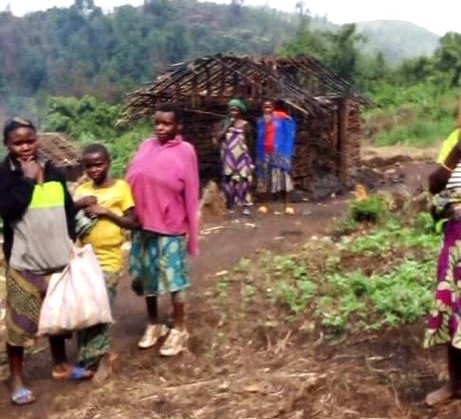
Displaced from their lands in the eastern area of the Democratic Republic of Congo (DRC) in the 20th Century, with neither consultation nor compensation, the Batwa People (formerly known as Pygmies) are struggling to return to their forest home in the Kahuzi-Biega National Park (PNKB). But the Park Authorities are attacking them once again. In January 2024, Park Authority guards, accompanied by Congolese Military, have once again raided a number of Batwa Communities, displacing people and burning their homes. The ongoing violence has led the African Commission on Human and Peoples Rights to direct a letter to the country’s government, under recently reelected President Félix Tshisekedi, calling for an end to the violence and the eviction of Indigenous Peoples from the Park. Park authorities have accused the Batwa of being members of the M23, a Tutsi insurgent group fighting the government of the DRC, mainly in the country’s northern Kivu Province. The Batwa firmly reject the accusation, and have declared their intention to continue the fight to return to their lands by all non-violent means possible. Land is Life fully endorses the stance of the African Commission and echoes its call for an end to violence against the Batwa, who have been brutally displaced from their ancestral territories in another example of what has been called ‘Fortress Conservation’. The Batwa are the original occupants of what is now the Kahuzi-Biega National Park, and as such, their right to live in peace in their original territories must be respected. Conservation can never be a motive for violating the human rights of Indigenous Peoples. SIGN UP BELOW TO RECEIVE OUR WEEKLY ALERTS
